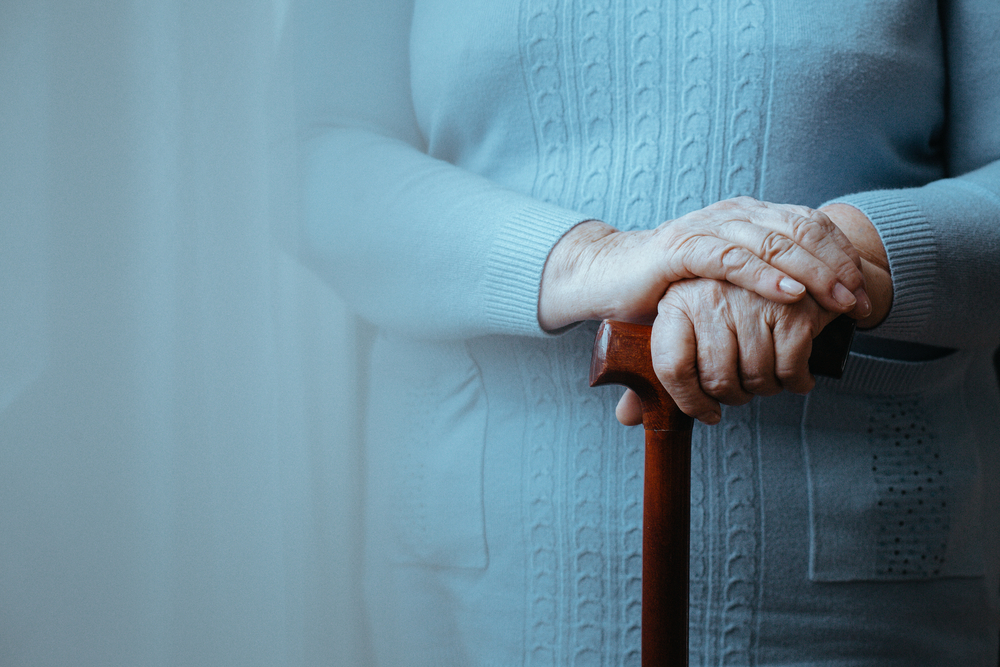Big Data is a Big Deal for Older People Who Are Blind or Low Vision

As a part of the Aging and Vision Loss National Coalition initiatives, big data regarding people aged 65+ in the United States was utilized to study older Americans and vision loss in a collaboration between VisionServe Alliance (VSA) and The Ohio State University College of Optometry. In November 2021, the two organizations embarked on a project to analyze standardized statewide data and national reports of people who are blind or have low vision. An eight-state pilot project was completed in March 2022, with the initial findings released to the public on April 4 at VSA’s Executive Leadership Conference.
What is Big Data, and what does it have to do with vision loss?
Big data is “extremely large data sets that may be analyzed computationally to reveal patterns, trends, and associations, especially relating to human behavior and interactions” (Oxford University Press, 2022).
The Big Data Project provides state-level data on the rate of blindness and low vision among people aged 65 years and older in eight states: Pennsylvania, New York, California, Louisiana, Florida, Missouri, Oklahoma, and Illinois. These briefings also describe the rate of chronic conditions, quality of life, and disability indicators among older people with and without blindness and low vision.
“We really have limited resources to address public health initiatives when thinking of things like vision—so determining where the most immediate needs are turns out to be really helpful so you can start to direct scarce resources to groups that could benefit the most,” said Dean VanNasdale, OD, PhD, Associate Professor, The Ohio State University College of Optometry (VisionServe Alliance, 2022).
The Big Data Project briefings are the only studies providing comprehensive descriptions of older people who are blind or low vision at the state and county levels in one document for each state. The current eight states’ Big Data Reports are available as downloadable documents.
“These are factual reports,” said John E. Crews, DPA, the former Lead Scientist with the Disability and Health Team in the National Center on Birth Defects and Developmental Disabilities, Centers for Disease Control and Prevention (CDC). “We can apply the content to funding, services, and advocacy efforts in any venue.” (VisionServe Alliance, 2022). Dr. Crews is Senior Scientist for the Big Data Project, collaborating with Dr. VanNasdale to analyze and interpret the data.
The data sets included in the project are the Behavioral Risk Factor Surveillance System (BRFSS) and the American Community Survey (ACS).
Policymakers and advocates can use the Big Data Project briefings to develop programs to improve the lives and independence of older people with vision loss and to tailor services to areas of the state most in need. President and CEO of NewView Oklahoma, Lauren Branch, said one of the biggest challenges in providing services to the low-vision community is a lack of funding, which ties to a lack of data (VisionServe Alliance, 2022)
“We’ve been discussing needing data for years,” Ms. Branch said. “Those of us who have been serving in this field anecdotally know how large this population is, but we’ve never had this specific data to back up what we are saying.” (VisionServe Alliance, 2022).
This data will now give agencies like NewView Oklahoma a boost in talking with their community and policyholders. Ms. Branch said the report will help express the needs and impacts their services do and can have on their population without being siloed.
Data Results
According to the national report (covering all 50 states), 7.3% of elderly individuals report blindness or vision loss. (Crews & VanNasdale, 2022). This is not distributed equally across racial or ethnic groups or by state or county lines. According to Dr. Crews, the BRFSS survey includes 440,000 individuals and includes several data points; for example, in this report, the national breakdown of visual impairment of individuals aged 65+ by race/ethnicity is:
| Race/Ethnicity | % Prevalence |
| White, non-Hispanic | 6.1% |
| Black, non-Hispanic | 10.5% |
| Native American | 14.2% |
| Hispanic | 13.9% |
These data indicate a significant impact on older individuals who are blind or low vision in minority populations. Additionally, the data reports a prevalence rate of 5.8% in Illinois and Louisiana 12.4% (Crews & VanNasdale, 2022). “Even within this country, the prevalence of visual impairment varies from state to state,” Dr. Crews said. “We found even more variability from county to county.” (VisionServe Alliance, 2022).
Looking at the state of Missouri, the overall prevalence of visual impairment is 7.3%. The counties’ prevalence ranges from 2.6% to 21.1% within the state. Crews said the higher prevalence is typically in rural areas (Crews & VanNasdale, 2022).
“Those areas tend to be under-resourced,” Crews said. “People are poorer in those areas. They don’t have access to healthcare, eye care, and have virtually no access to anything that looks like vision rehabilitation.” (VisionServe Alliance, 2022). The impact of these disparities is discussed in the article on social determinants of health (link).
With the groundbreaking insight of the findings of the first eight states, VSA is determined and dedicated to completing the project for the rest of the country, starting by recruiting additional states for the next cohort.
“The Big Data Project is VisionServe’s most ambitious undertaking to date,” said Ms. Lee Nasehi, President and CEO of VSA. “It is an honor to work with the distinguished Ohio State University College of Optometry to bring this project to fruition.” (VisionServe Alliance, 2022).
To learn more about VSA and the Big Data Project, contact Libby Murphy at [email protected].
Sources:
Crews, J., & VanNasdale, D. (2022, April 3). United States’ Older Population and Vision Loss: A Briefing. VisionServe Alliance. https://visionservealliance.org/reports/
VisionServe Alliance and The Ohio State University College of Optometry provide groundbreaking data on the rate of blindness and low vision among people over 65 in eight states. (2022, April 1). https://visionservealliance.org/the-big-data-project/
Oxford University Press. (2022). Big Data. Lexico. https://www.lexico.com/definition/bigdata
by Libby Murphy, VisionServe Alliance